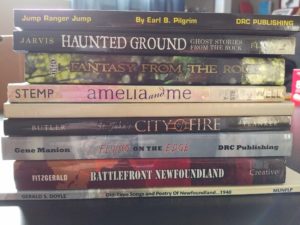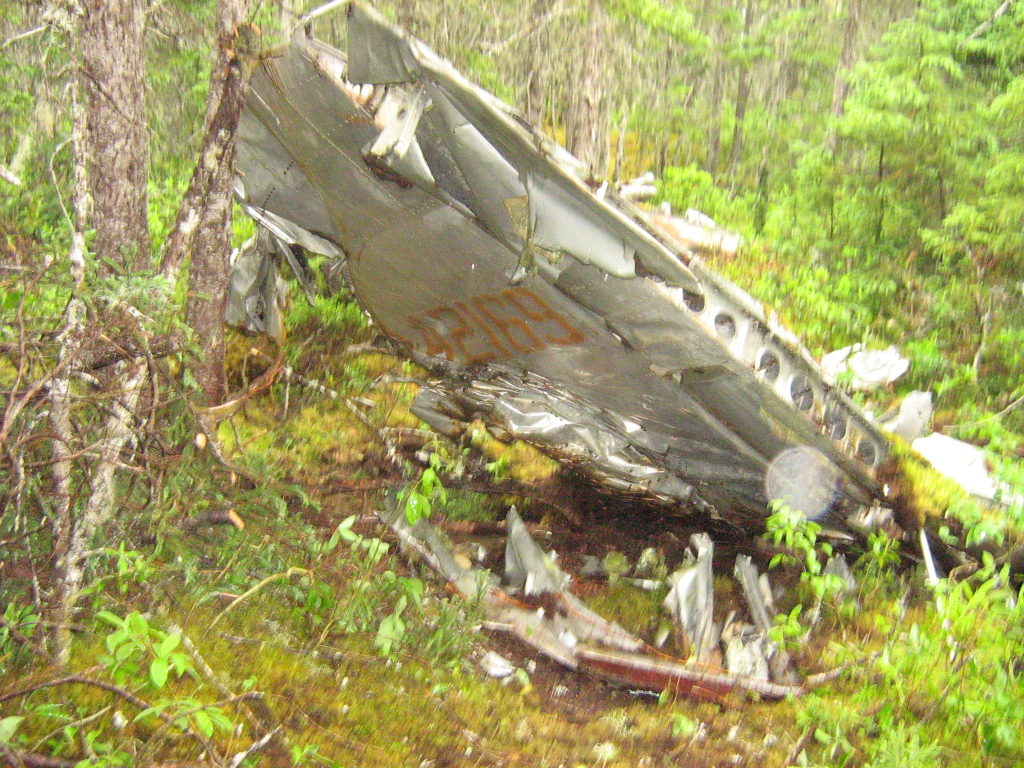In the past while I have read a few books that I haven’t done reviews for. Perhaps I will catch up at some point. Most recently was listening to the audio book for The Day The World Came To Town: 9/11 in Gander, Newfoundland by Jim DeFede, which was an enjoyable book, told the story of the stranded passengers in Gander and the surrounding communities, but could have used a read-over to two by some Newfoundlanders. There were a few things wrong in the book when talking about communities and history, and I wish someone had said that not all Newfoundlanders appreciate the term “Newfie”, but overall, a good telling of those few days in Gander when the world changed.
As part of a #NLReads put on by the Newfoundland Public Libraries I have decided to try to read as many Newfoundland books as I can this month. I brought a number of books with me during the move, and picked through to find all the Newfoundland ones I haven’t read yet. So here’s my reading plan for the month. I’m also listening to audio books, but there don’t seem to be as many audio books by Newfoundland authors available on the NLPL audio/ebook app.
 The first book was Jump Ranger Jump: The Story of Newfoundland Ranger Jack Hogan by Earl B. Pilgrim. Like Pilgrim, I find Hogan’s story fascinating, and have read other books that have touched on the tale, as well as have read some of the reports in the archives at the Rooms.
The first book was Jump Ranger Jump: The Story of Newfoundland Ranger Jack Hogan by Earl B. Pilgrim. Like Pilgrim, I find Hogan’s story fascinating, and have read other books that have touched on the tale, as well as have read some of the reports in the archives at the Rooms.

In brief, because you’d be better off reading a full book on the adventure, on 08 May 1943 Ranger John (Jack) Hogan was being flown from Goose Bay to Gander, the aircraft filled with smoke and in the confusion, some of the men bailed out. Hogan was the last to bail out. Hogan spent the first night sleeping in a tent made from his parachute. On his second day, he came across Corporal Eric Butt of the Royal Air Force who had also spent the night in the cold, May wilderness, but without Hogan’s survival skills. Butt’s feet had frozen, and over the next few days, as they tried to walk to a nearby community, Butt’s feet got progressively worse. When they came upon a small cabin, Hogan and Butt settled in, and as Butt could not walk any further, stayed there for the next few weeks. Hogan took care of Butt, catching rabbit, foraging for food, and trying to keep Butt’s frostbitten and infected feet clean. Hogan could have walked out within a couple of days, but stayed with Butt, knowing that if he left, Butt would die. They were rescued on 25 June 1943, brought to Hawke’s Bay then to Port Saunders on 26 June, and finally to the hospital in Gander on 27 June.

Ranger Hogan by Herven Maxwell Dawe. From PANL GN 4/5 AG/57/5
Throughout this, Hogan kept a diary which does not give a great deal of information. The Newfoundland Rangers had some reports about the incident, but Hogan, after the incident was over, did not really talk about it.
Pilgrim’s book is a quick and interesting read. He goes through the story of Hogan and Butt being stranded in the woods and the stories of Hogan’s family, the Rangers, and the people of Port Saunders and surrounding areas who were involved in the incident. Pilgrim spends a lot of time imagining how Butt and Hogan survived, the conversations between the two men, and how they kept each other motivated to survive, even when Butt was in agony. Pilgrim also goes into how he conducted some of his research, and gives transcriptions of interviews he had with people who had stories about Hogan. Overall, it makes for a great read, and is a wonderful story of a real Newfoundland hero.

Hogan and Butt in Port Saunders before being flown to Gander. From McGrath et al. 2005.
But, like other books in this genre, I do have a problem with the blurring of what is history and what is speculation. I know it is the historian in me. Pilgrim keeps transcriptions of interviews in italics, but other parts seem like stories, but because they are not italicised, does it mean they are paraphrases of these interviews? What about some of the conversations between him and his informants? How much is paraphrasing and how much is history. Again, it’s my academic side because I would like to know what is true and what is speculation for if I ever wanted to cite something when telling the story myself. He also didn’t touch on the discrepancy in the story. Reports vary as to if one or two people bailed out before Butt and Hogan, but then Pilgrim interviewed people who said (or didn’t say, you have to read between the lines) that both bodies were found by locals.

This cabin is on the back of Pilgrim’s book, and I’m speculating, but it might be the cabin the two men survived in.
On the whole, I would recommend this for a good read about an amazing story of Newfoundland survival.
For other reading about the Newfoundland Rangers, check out The Newfoundland Rangers by Darrin McGrath, Robert Smith, Ches Parsons and Norman Crane, Probably Without Equal: Frank Mercer and the Newfoundland Rangers by John Parsons, and A History of the Newfoundland Ranger Force by Harold Horwood.




 The first book was
The first book was 




